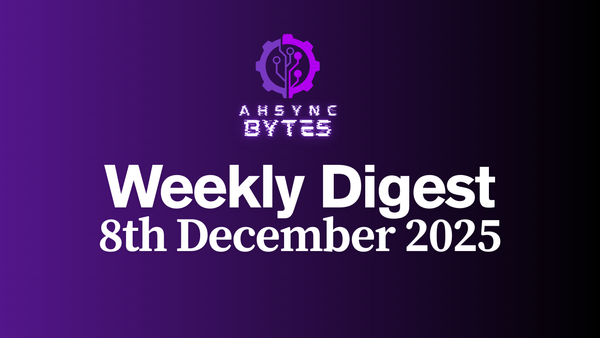AHSYNC BYTES - Weekly Digest (27th Oct, 2025)
From OpenAI’s enterprise data breakthrough to China’s surging AI adoption, and Angular’s latest innovations — this week’s digest captures the key movements defining the intersection of AI and modern frontend development.
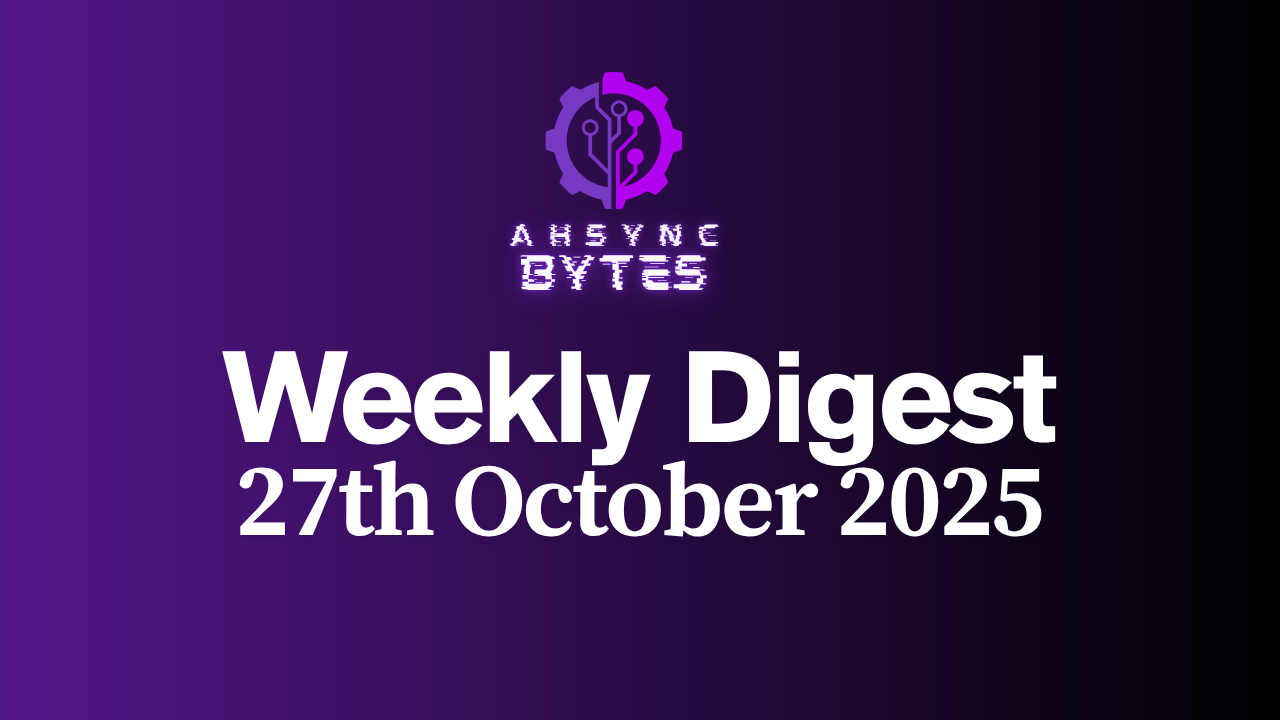
If you’re passionate about A.I, Angular, and the web, this roundup is for you. Packed with the latest buzz, practical hacks, and future-forward updates, it’s your one-stop source for everything that’s driving innovation in tech today.
🤖 AI & Machine Learning
OpenAI Connects ChatGPT to Enterprise Data to Surface Knowledge
OpenAI is surfacing company knowledge by connecting ChatGPT to enterprise data, turning it from a general assistant into a custom analyst.
For business leaders, generative AI’s potential has always been limited by its lack of access to internal data. Even the best AI isn’t helpful if it can’t access the info needed to do a job. OpenAI points out that the info you need is often in your internal tools, but that knowledge is scattered across documents, files, messages, emails, tickets, and project trackers.
This scattering is more than just annoying; it hurts efficiency and decisionmaking. The main problem is that these tools don’t always connect, and the best answer is often spread across all of them.
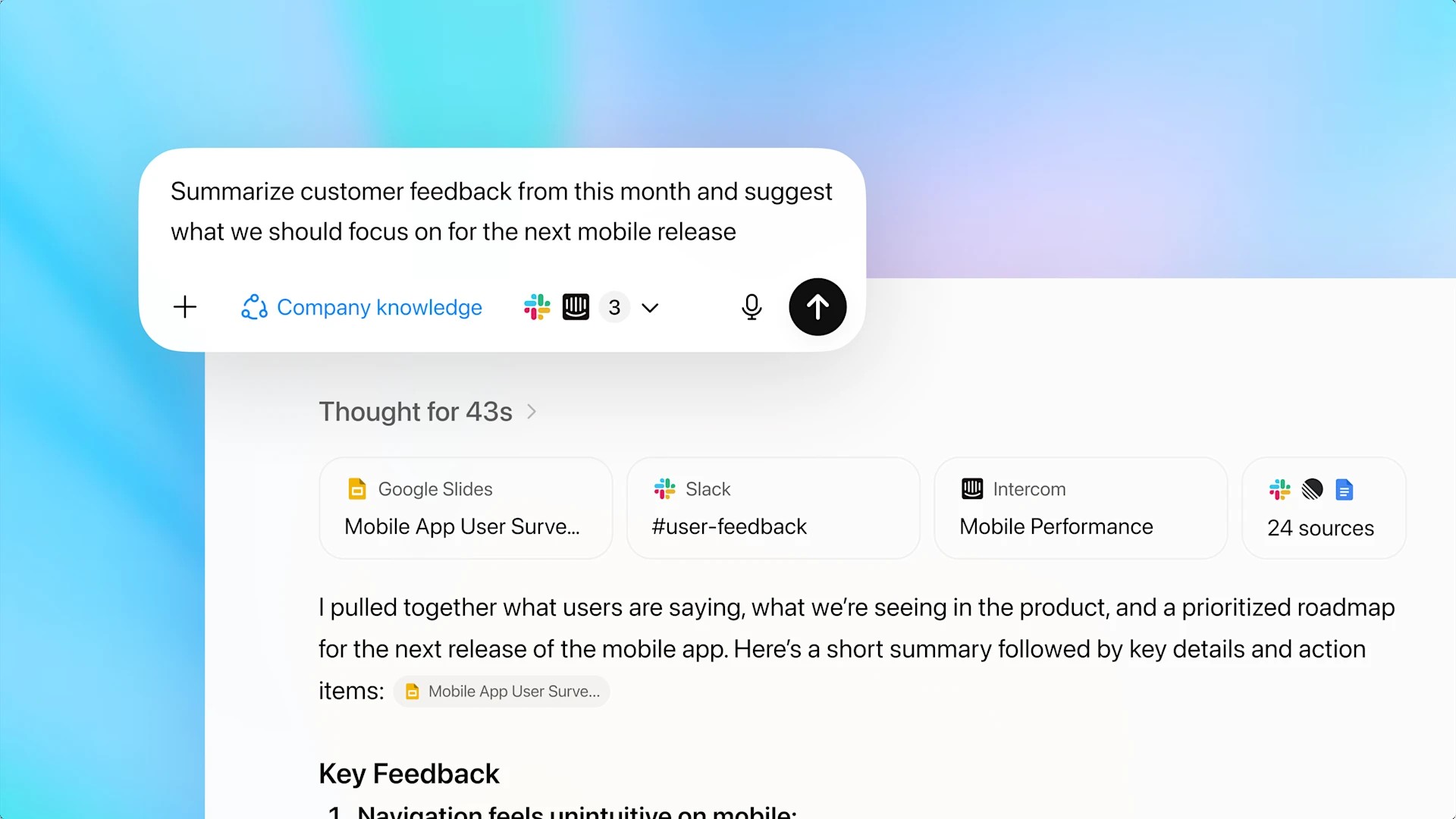
Meta Hires and Fires AI Workers: Behind the Contradiction
Reports are circulating this week that Meta is cutting approximately 600 positions from its AI division, a move that seems paradoxical given the company’s aggressive recruitment campaign over recent months. The contradiction raises important questions about Meta’s AI strategy and what it signals for the broader tech industry.
For those following Meta AI job cuts, the timing is striking. Just months after the company went on a highly publicised hiring spree – offering compensation packages reportedly reaching up to hundreds of millions of dollars to lure top researchers from OpenAI, Google, and other competitors – Meta is now scaling back parts of its AI workforce.

China’s Generative AI User Base Doubles to 515 Million in Six Months
The AI adoption in China has reached unprecedented levels, with the country’s generative artificial intelligence user base doubling to 515 million in just six months, according to a report released by the China Internet Network Information Centre (CNNIC).
This dramatic expansion represents an adoption rate of 36.5% in the first half of 2025, positioning China as a formidable force in the global AI landscape. The CNNIC report, published on Saturday, reveals that China’s AI adoption more than doubled between the end of December 2024 and June 2025.
This growth trajectory underscores the rapid integration of AI technologies into Chinese society, driven by what the report describes as “advanced infrastructure and state encouragement.

🚀 Angular
How to Display Details Data On Demand in a Hierarchical Grid
Unlike a traditional Master-Detail Grid, which requires manual setup and configuration, the Hierarchical Grid from Ignite UI for Angular automatically handles parent-child data relationships out of the box. It’s designed for simplicity, allowing you to explore nested data through expandable rows with minimal setup.
One of the best things is that you can expand and collapse hierarchical data effortlessly without extra coding, saving you hours of work. To guide you through the entire process of displaying detailed data on demand, we’ve outlined the necessary steps in this how-to blog post. There are also code snippets and demos to streamline the development cycle further.
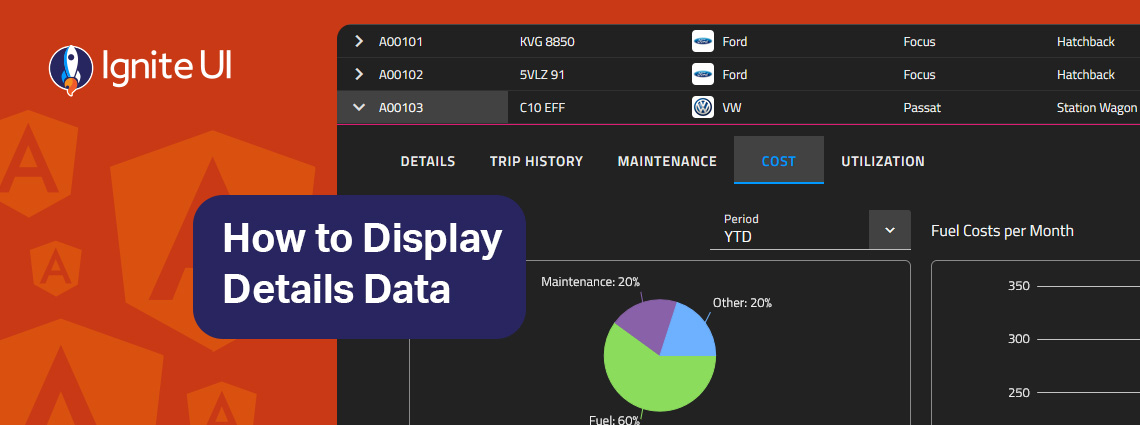
Ng-News 25/42: Ng-Conf Keynote, Community Content
In this week’s ng-news:
- ng-conf revealed what’s next for Angular —
@angular/aria, Signal Forms, and early AI integration - A 4-part performance series by Alejandro Cuba Ruiz
- A free testing workshop by Younes Jaaidi at ViteConf
- And a new article by Tim Deschryver on the upcoming Signal Forms
Angular Zoneless Unit Testing
You’ve probably heard: Angular is moving toward a Zoneless future. Migrating your Angular app to run without Zone.js brings several benefits, but for medium-to-large applications, the process might not be trivial.
The good news is that you can migrate an Angular application to Zoneless gradually. For example, migrating your components to use OnPush change detection is a recommended step toward Zoneless compatibility — and it also delivers immediate performance benefits. Nowadays, this has become much simpler when using Signals.

Upcoming Events
- NG-DE Berlin 2025: November 5-7, 2025, Hotel Orderberger (GLS Campus Berlin)
- NG Poland 2025: November 18 2025, 10th Edition
- Angular Day: will be held in 2026, Get notified yourself!



🌐 Web & Frontend
Building AI-powered apps with Angular and Gemini
Like it or not, we live in the age of AI, and it can be both exciting and frustrating. On one hand, AI can help us unlock almost unlimited capabilities for the apps we build; if in the past, tasks like image recognition or text classification could be a dealbreaker for the average developer, today, customers almost assume one would be able to pull things like this off in ridiculously short timeframes.
On the other hand, however, the landscape of AI development is probably best described as "hostile". We move at incredible speeds, new models and approaches drop and then die out before we even have time to properly use them, lots of tutorials are actually disguised ways of selling us something, and lots of information is still being gatekeeped by more seasoned developers, hidden behind buzzwords like "agentic AI" , "RAG" and so on.

5 TypeScript Utility Types You Can't Live Without
I decided to share a collection of custom utility types that I use in my daily work. Maybe you'll find them useful, maybe not, but it's worth knowing that creating custom types really gets the job done, especially when building strongly-typed and safe code. Perhaps it will inspire you to create your own types that solve the problems you encounter every day?
Let's dive into this given article!

6 CSS Snippets Every Front-End Developer Should Know In 2025
In 2025, every front-end developer should know how to enable page transitions, transition a <dialog>, popover, and <details>, animate light n' dark gradient text, type safe their CSS system, and add springy easing to animation. Explore more in the given article.
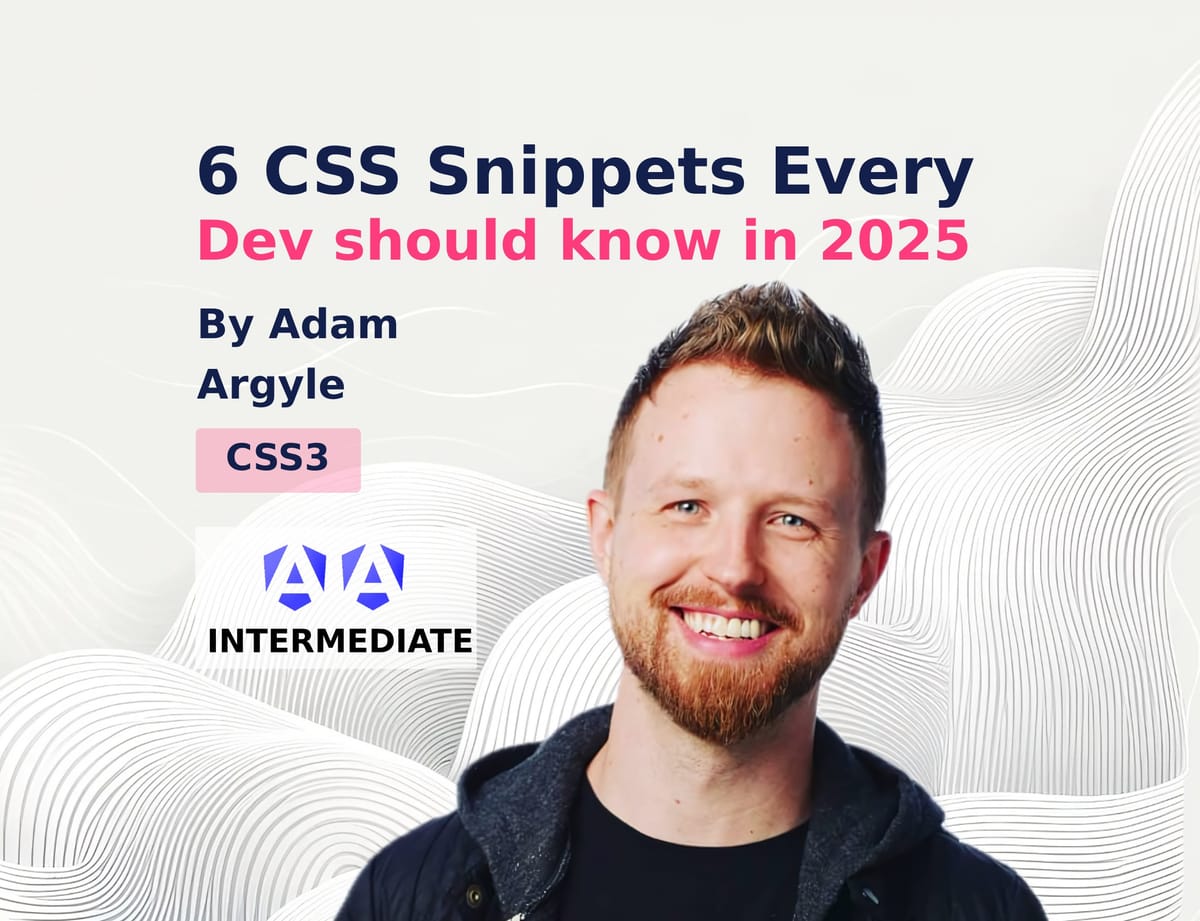
Upcoming Events
- TechCrunch Disrupt 2025: October 27 – 29, 2025 - Premier startup showcase and competitio
- IT Nation Connect Global: November 5, 2025 - in Orlando USA
- AWS re:Invent 2025: December 1 – 5, 2025 - Global cloud computing conference
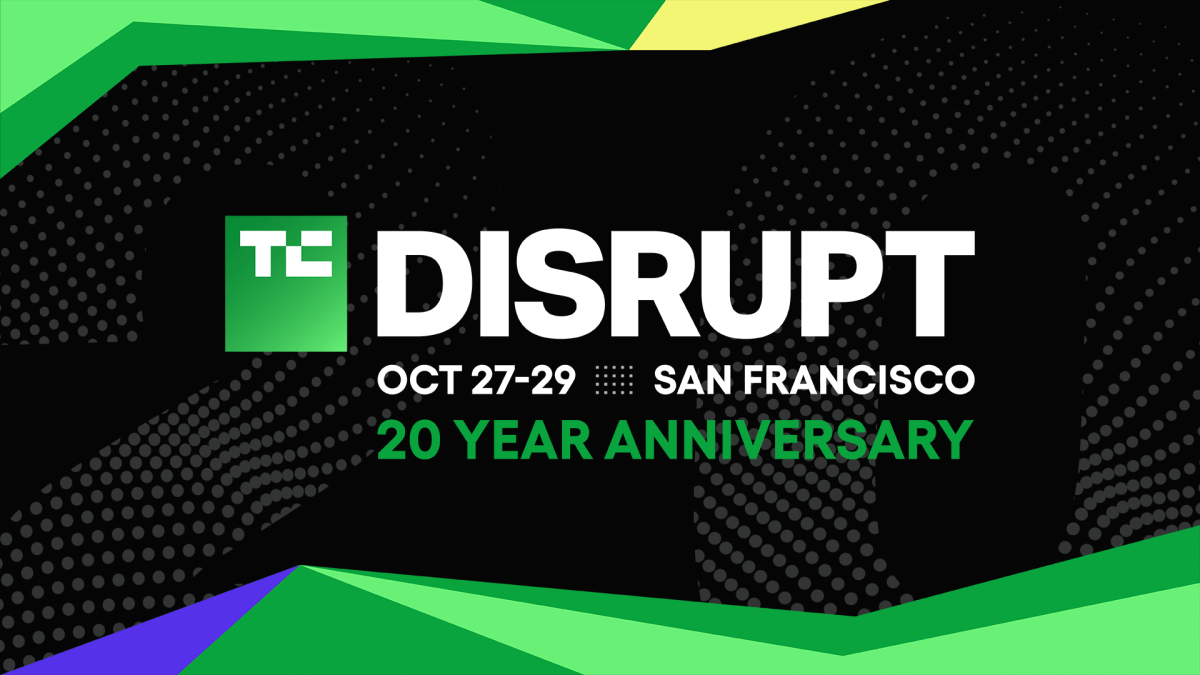


💡 Bottom Line Up Front
AI continues to make headlines as OpenAI connects ChatGPT to enterprise data, transforming it into a business-ready knowledge assistant. In contrast, Meta’s simultaneous hiring and firing in AI reveals strategic uncertainty, while China’s rapid AI adoption demonstrates unmatched national-scale growth and ambition.
For frontend developers, Angular remains at the forefront of innovation — embracing zoneless testing, hierarchical grids, and emerging AI integrations. Alongside TypeScript and CSS advancements, this week’s insights emphasize the importance of adaptability and continuous learning in an era where frameworks and AI evolve hand-in-hand.
I hope you find these helpful. If you do, please share our blog with others so they can join our amazing community on Discord (link below)
Don't miss out – join our awesome community to grow as a tech enthusiast, and to help others grow.
As always, Happy coding ❤️
















